#d'art
Photo

and WHY haven't I seen a post of lil D’art yet?!
#psychonauts#psychonauts 2#PsychOdyssey#d'artagnan#d'art#Double Fine PsychOdyssey#posty post#pbh psychonauts
238 notes
·
View notes
Text
The Astubelief Family
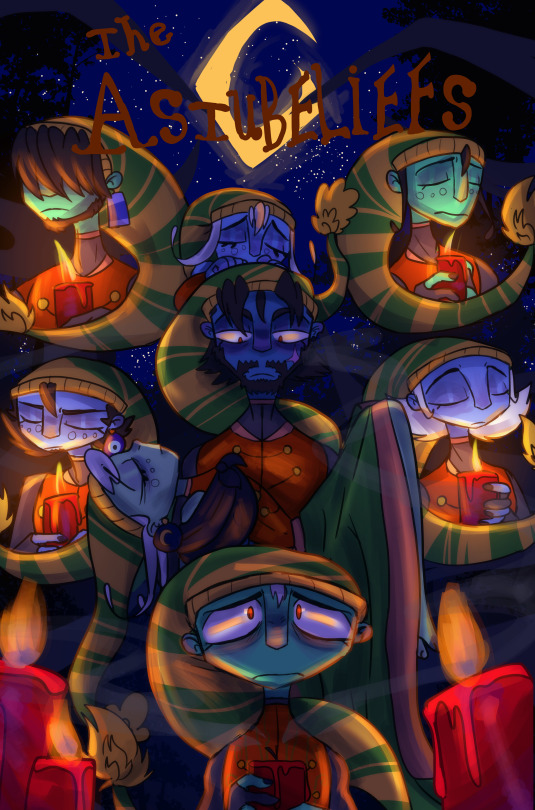
I and a mutual @nhieeeen were discussing some lore and Headcanons on D'arts family so here goes some ideas!(Disclaimer: none of this is canon, and is all made for fun)
The Astubeliefs are a mysterious family of Psychics. With their strange fascination with the paranormal and expertise in Cryokenisis, and being able to communicate with the dead for limited amounts of time, they are relatively known with fellow Psychics.
They often travel to nearby Fairs, Carnivals and Circuses to perform their fascinating and supernatural ability on those who wish to communicate with lost loved ones, or enemies. The Astubeliefs are easy to spot, their trademark colors of yellows, greens and oranges, along with their strange hats make them stand out. Not to mention, there's something about the family that makes them look... Dead.
Natasha "Volkov" Astubelief.
Natasha was a relatively quiet, Christian and peaceful woman. She always had a love for space and the stars. She'd tell stories about constellations and planets to her children every night. She died giving birth to her last child, Ania. Despite it being one if the family's main hobbies, Natasha was never fond of the whole communicating with the dead thing. In her eyes, she thought that speaking with spirits would keep them from passing on into Heaven to rest in peace. Ronan and Natasha, though they never fought often, when they did, it would usually be about this.
Ronan Astubelief.
Ronan is a very quiet but strict man. He always kept to himself and trained all of his sons. Ronan is very powerful mentally, and can somewhat communicate with the dead, using a similar method to an Ouji Board or Crystal Ball. After the death of his wife Natasha, he was consumed with grief. Some say he went crazy, as he even believed he could revive Natasha. He experimented on dead animals, and horrific attempts like that. His discovery soon lead him to learn that he'd need a living vessel of some kind to keep her alive. He was too old and weak, not as strong as he used to be. His youngest son, D'Artagnan however...
Seymon Astubelief.
Seymon is the eldest son. He takes after his father, being the family's caretaker after Natasha's passing and his father falling into sadness. He tries his best to keep the family together, but forgets to care for himself at times. Out of all siblings, he is definitely closest to his father's abilities in communicating with the dead.
Vlad Astubelief.
Vlad was and has always been a "Mama's boy" so after his mother's passing he distanced himself from his father. To say he's spoiled would be and overstatement, but he is quite rude and whiney at times whe he doest get his way. Despite his somewhat childish demeanor, he is a professional at using Cryokenisis. He means well, but unfortunately, he's isn't the best with coping.
Filipp Astubelief.
Filipp is definitely the weakest Psychic in the family, but he makes up for it with his physical strength and personality. Filipp usually spends his time playing and entertaining his younger siblings. When things get grim, he tries his best to put a smile on all their faces. Only being able to levitate a few things, and can barely make a flurry with Cryokenisis, he can lift almost anything. And it's hard not to feel at least the littlest at ease when he gives you a smile.
Yuri Astubelief.
Yuri is almost completely mute. Selectively mute. When he does speak, he talks in Russian and rarely speaks in English unless he absolutely has to. Yuri is definitely the more meek Astubelief child. Usually hiding away keeping watch over Ania. The paranormal, and death in general has always frightened Yuri after his mother's death. Which is unfortunate, because like Seymon and his father, he can communicate with the dead, sometimes unwillingly, causing him to have nightmares.
Ania Astubelief.
Ania is the only Astubelief daughter, and the only one of their children who isn't Psychic. Because of this, her whole family is overprotective of her, constantly watching over her. Her father, though he loves her very much, can't stand to look at her because of how much she resembles Natasha. Ania feels like the only people who understand her are Yuri and D'art. Yuri is quiet, so it's easy to talk to him, and D'art is closest to her in age. Despite all these issues, she's the cheeriest of the family. A small beacon of hope that keeps the family together.
D'artagnan Astubelief "Volkov".
D'art is the youngest son of the Astubeliefs. Not only is he incredibly strong mentally, but his Cryokenisis skills are exquisite. D'art has noticed how strange his family has been behaving since his mother's death. It's impacted everyone differently, but the one he's worried most about is his father, who seems to be a quiet, sad, shell of a man one moment, and raving, mad scientist the next. D'Artagnan has a similar situation as Yuri, having nightmares about spirits and the dead.
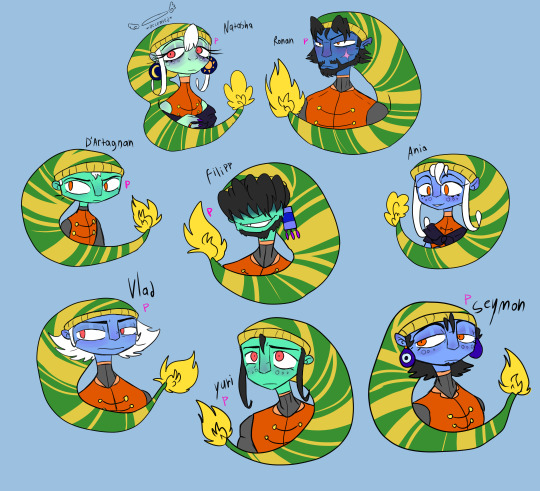
here's the whole fam in a better light :)
After his siblings convinced him to check on their father, D'art came to the horrific realization that his father was trying to bring his mother back from the dead. In a desperate attempt, he tried to convince D'art into helping him revive him mother. With his powerful psychic abilities, he could keep her alive. This, however, would mean both D'art and his Mother would basically be half living... half dead.
Not only is this extremely dangerous, but D'art would basically become a zombie. And for all they know, it wouldnt even work. So he ran away to Whispering Rock. He changed his last name to his mother's maiden name, Volkov, so he wouldn't be associated with his old one if his family ever came looking for him.
Roblogs are greatly appreciated :)
#I was thinking maybe they could have and uncle/aunt/ obscure relative or something that was influencing their dad into doing this#But anyways#Here's the basic story so far!#I live D'art and his family#They're so fun to write!#Doodle88#Doodles doodles#Psychonauts#Psychonauts w#rhombus of ruin#psychonauts fanart#Psychonauts oc#D'Artagnan Astubelief#Psychonauts d'art#D'art
63 notes
·
View notes
Text
I Dig You 4
Chapter 4 out of 8
Robin is tentatively excited for her first internship: an archaeological dig in the Netherlands, where she has been studying. However, when she gets there, Steve is there too. The dick of their uni that she now has to work with. Great. But being stuck digging for six weeks makes people bond and maybe he isn’t too bad. Maybe he can be her friend.
AKA an archaeology interns, modern, enemies-to-friends stobin au
On AO3.
Ships: none
Warnings: none
~~~~
Chapter 4: Visitor
Week four starts them off in put seven. Put seven is different than the ones they’ve worked on before, since they were very much part of the construction site before. However, put seven breaks ground on the other side of the road, where construction hasn’t reached yet. So, they’re more in sight than before, along one of the roads out of the town.
Since it’s a rural area of the Netherlands, the road itself doesn’t get much traffic and the traffic it does get are people on bike rides or people with dogs.
Jeroen warns them about the dogs, since they’re a bitch when they get into the trenches. Dogs tend to not have any regard for the delicate finds and coups or about the fact that the surface has to remain neat to remain legible.
“If possible, try to get people to put a leash on their dog if they want to ask questions,” Jeroen tells them with a sigh that shows them that archaeologists are often not too successful in that.
Indeed over the next few days, they notice people looking curiously and a dog does run through their trench, which sucks, because they hadn’t taken the photos of the trench yet, so they have to shave the top carefully again to clean it up.
Most people just walk by. However, there are some that stop and ask questions. Robin and Steve leave that to the others, who have more experience and can actually speak the language.
Still, it happens on Thursday that most have moved on further in the trench, leaving the two interns to finish off the last few coups alongside the road, that they get another visitor at the dig. It’s a young boy, a teen with a pitbull that’s luckily on a leash. He asks: “Wat zijn jullie aan ‘t doen?”
It’s a short sentence and Robin recognizes wat as what, zijn as are and doen as doing, filling in the gaps easily. Though she’s surprised that Steve answers first: “That depends, how good is your English?”
“I’m great at English,” the boy exclaims in an indignant tone and accented voice. “I’m already in my third year, you know.”
The kid looks closer to fourteen than seventeen, but then Robin remembers the Dutch schooling system is different, so he likely is fourteen. It surprises her how well Dutch people speak English, sure most she met were good at it, but they were also adults, who studied at university, which is a different demographic.
“Great,” Steve smiles. “I’m Steve, that’s Robin.” Robin waves and says: “Hi.”
“Oh, I’m Dustin, this guy’s name is d’Art,” Dustin introduces both himself and the dog.
“Nice to meet you,” Steve goes on in a kind voice that has Robin giving him a glance. “What did you want to know?”
“Just what you guys were doing, I guess. You don’t look like builders,” Dustin shrugs.
“We are not. We’re archaeologists,” Steve says, making sure to talk slowly and clearly so the kid can follow, since it isn’t his native language. “We are getting all the information, before the building can destroy it.”
“So did you find anything cool? Like gold?” Dustin asks, pulling d’Art’s leash closer as he squats at the side of their put, trying to see what they’re working on.
Neither of them have been digging long enough to be truly annoyed with the question about gold yet, but Robin mentally notes that none of their professors had been lying about it.
“No, archaeology isn’t about gold. We found a lot of pot pieces though,” Steve laughs.
“Then you found just pots? That’s boring,” Dustin informs them bluntly.
Robin wants to protest that, but Steve is quicker, managing to be more patient than her as he says: “Oh, but it’s not at all boring. Look,” he steps to the side and points at a coup they still have to finish. “You see how the sand is darker here?”
“Yeah?” Dustin replies with a voice that asks why he should care.
“Well, this is a spoor, it tells us that someone – likely hundreds, maybe even thousands, of years ago – dug a hole here. It could have been to put a pole in to built a house or to bury something or to get some sand or to have a place to throw stuff away,” Steve explains. “This right here used to be a house.”
“A house?” Dustin asks, a little more awed now.
“Yup,” Steve nods. “We found multiple of these kinds of sporen, all circles, all poles, in the shape of a house. Isn’t that cool? I’m standing in a house right now.”
“That is pretty cool,” Dustin agrees. “How did you know it was a house? Just the shape?”
“A combination of the shape of the sporen and the shape they are in, yes. But we often don’t spot them in the field. Usually we see them later when looking at a map of the sporen, since they are easier to spot like that, but we got lucky here,” Steve says.
“So why’s the ground a different color?”
“Well different layers of the earth have a different color. If you come over here, I can show you,” Steve says pointing to the corner of the trench. “D’Art can’t come near the put though.”
Dustin looks excited at the prospect and ties d’Art to a nearby tree so he can come take a closer look at the profile Steve is cleaning, which is a fancy way of saying that he’s scraping the dirt of the side so you can see the different horizons in the soil.
Steve looks excited as well, happy to explain it. Robin also likes talking about archaeology, but she often just talks about bones. She isn’t good at all this and her explanations get rambled and complicated, filled with terminology, but Steve doesn’t seem to have that problem.
She decides to continue working, but keeps listening in as Steve continues to talk to Dustin about their dig.
“See how you have all these different colors here on the side?” Steve asks and Dustin hums. “Those are soil horizons. They come from different times. This yellow sand I’m standing on is from the Ice Ages.”
A gasp: “Really?”
“Uh-huh, it was windy here back then and nothing grew, so sand was put down here,” Steve says. “Later things grew, rivers flooded and new layers got put over the old ones. So, the top layer here is the youngest and the one on the bottom the oldest. Get it?”
“Yeah, I do,” Dustin says, beginning to sound excited.
“So, if you have an older layer with a hole in it and a new layer gets put over it, what do you think happens?” Steve asks.
“Uhm, the old layer gets covered by the new one, so the hole gets filled?” Dustin answers.
“Indeed,” Steve says excitedly. “So if that new layer is a different color, what do you see?”
“Oh! You see the spoor, because it’s a hole that’s filled,” Dustin says.
“Hell yeah, you got it, dude,” Steve cheers and Robin hears a high-five.
“So what are you doing then? Like why is she digging at that one? Don’t you already know what you need to know?” Dustin asks
“Well, we are digging them, because then we can know what shape it is, so what it might have been. Like the pole I showed you,” Steve says. “But also, because we find stuff in them.”
“You do?” Dustin asks.
“Yup,” Steve answers. “If it is a trash pit, then people threw stuff away in it, but they also left things in holes on purpose. We think they could be offers to the house or a ritual of sorts.”
“That’s pretty cool, but it’s just like pots, right? Not that thrilling,” Dustin comments and Robin rolls her eyes, taking a break from her digging to drink some water.
“First off, pots are very cool. Second off, there is other stuff too,” Steve says, sounding less annoyed than Robin would have been, had she been the one talking to the brat. No, Robin, not a brat, she forcefully reminds herself, just a young teen, annoying is part of the age. Be nice.
“Oehh, what other shit are you finding?” Dustin asks excitedly, clearly not interested in the pots.
Steve sighs and Robin looks up, ready to come save him if he looks like he’s done. But when she looks up, she sees him shake his head with a smile, before he answers: “Well, there is the skull cult, but that is in the Near East, so I don’t know much about that, but there have also been cow skulls found in house plans.”
“That’s cool! I’m gonna google that when I get home,” Dustin tells Steve.
And Steve sounds very happy about that as he says: “You totally should, man. It is really cool. Just like pots can be if you are curious enough to find out how.”
Robin looks up, because that is a different tone than she’d heard so far. Where Steve has been patiently explaining everything before, that last part sounds a bit gloating. And indeed when Dustin exclaims: “Hey! I’m curious,” Steve looks smug, like he knew he’d hit a button by saying that.
“You are?” he asks, like a little shit and Robin realizes he is manipulating this child into caring about ceramics, which is crazy, because not even every archaeology student is interested in ceramics.
“Yeah,” Dustin is practically pouting now.
“Want me to tell you more about them?” Steve asks, back to the genuine voice from before. Dustin nods enthusiastically. “Alrighty,” Steve cheers, before calling over Robin asking: “Robs, do you have that sherd from S7123?”
Robin doesn’t know how Steve seems to remember that, though, maybe because he’s the one that dug it out and wrote it down on the card and took a photo of it for his report later. It takes her a second to locate the find bag and bring it over to Steve.
“Ah, thank you,” he says, looking excited to continue his conversation, before he realizes that Robin has been digging this whole time. “Oh, I’m sorry, I haven’t been really doing my part, have I?”
“It’s alright, dingus, I call first dibs on the shower and then we’re even,” Robin assures him. He looks too excited and she’d feel bad if she asked him to stop. He can do more of the work later, she decides to count it as pay back for when she was drawing while he had to dig.
“Alright,” he smiles and Robin knows she made the right choice.
“Is she your girlfriend?” she hears Dustin asks.
“Nah, man, we just don’t wanna deal with the train every morning.”
“Oh, yeah, my mom says de NS sucks,” Dustin says. “But I think she’s into you.”
“Rest assured that she is not. Now, want to hear about the pots or not?” Steve gently but firmly puts a stop to that conversation, which Robin is grateful for. He doesn’t even out her – not that she would have minded, but Steve doesn’t know that and it’s nice he’s not presuming.
“Alright, tell me why pots are cool,” Dustin sighs, like he’d rather have the other conversation.
“First, you got to stop thinking of it as just a pot sherd,” Steve starts out with a little bit of grandeur in his voice. “This right here, is the basis of archaeology.”
“It’s a piece of pot,” Dustin tells him.
“It is, but do you know what this piece of pot can tell us?” Steve asks in return.
“That there were people who made pots here?” Dustin replies.
“I mean, yes that too, but not necessarily. Sometimes the pot sherd we find is from somewhere else, maybe traded or taken by someone traveling and, suddenly, this piece is part of a network, part of a bigger story,” Steve says.
Robin looks up again to check on them, Steve is a better storyteller that she’d thought, because Dustin is hanging on his lips. She’d always thought he was just pretty and a little charming, but he actually knows how to talk with people.
“You see, a pot and other pieces of ceramic – uhm, I think the Dutch word is aardewerk? – are part of people’s lives. A part that survives where other things do not,” Steve says. “This sherd right here, is likely from the Iron Age, so it’s at least over 2000 years old and I’m holding it right now. This is made by someone, a real life person. And we’re the first ones the hold it since it got lost.”
“Can I hold it?” Dustin asks.
“I’m sorry, if it were up to me, you could, but we still have to process it,” Steve says apologetically. “Pots in relation to the soil that I just showed you is used most often to date a site. But that is not the only thing a pot can tell us.”
“No?”
“No,” Steve confirms. “Pots also say a lot about what was considered stylish or trendy, like fashion today. A lot of cultures are named after their pots, because they are shaped and decorated differently.”
“But we can also analyze where the clay came from to make the pot, so we know if the pot is made here and how far people went to get the clay to make it or if they traded the pot and it came from far away,” Steve says.
“We can also see how a pot is made, you probably know pots are thrown on wheels, but those weren’t invented yet when pots first arrived and there are a lot of ways to hand make a pot,” Steve continues on. “Can you guess how to make a pot without a wheel?”
Robin notes that Steve has a good way of keeping Dustin engaged, balancing between giving the kid information and forcing him to think for himself.
“Just, like, smash it in shape with your hands? That doesn’t sound right,” Dustin answers, seemingly frustrated at the idea of not knowing something.
“Yeah! That’s one,” Steve says excitedly. “Hand shaping. Though it’s more pinching it into shape than smashing and it limits the size. Want to guess more? Or want me to just tell you?”
“I can think of more,” Dustin protests, sounding offended at the idea that he couldn’t think of more ways.
“Well, take it away, smarty-pants,” Steve encourages him with a teasing edge in his voice.
Dustin is quiet for a moment and Robin looks up to check on them. Dustin hasn’t walked off yet, but is deep in thought as Steve waits patiently for him. In the background d’Art is peeing on his tree, seemingly content to snuffle about while Dustin talks to Steve.
“Can you just built it up with like, uhm, like- I don’t know the word for it, but flat pieces of clay?” he finally answers after a moment.
“Yeah, totally,” Steve nods with a big smile. “Want hints for another technique?”
“Maybe,” Dustin says, but it looks like it hurts him to admit that.
“It’s more obvious as a method for pouring something that hardens,” Steve says.
Dustin thinks that over for a second, before smugly exclaiming: “Moulding, that’s not that hard to guess, really,” like he hadn’t struggled with it. Kids are pretty hilarious, Robin realizes.
“There is another common method, want me to just tell you or continue guessing?” Steve asks.
“Just tell me,” Dustin demands, obviously done with feeling like he doesn’t know anything. Robin pegs him as one of the smarter kids in class, who can be a bit obnoxious about their intelligence, though not maliciously.
“Coiling, when you roll out a worm of clay and roll it up to form a pot by smushing it together into a shape,” Steve says, not commenting on the tone.
“They really do that?” Dustin asks, sounding surprised. “That seems… childish.”
“Hey, if it works, it works. It’s not more childish than moulding or hand shaping and it actually takes a lot of patience,” Steve tells him. “You have to let the clay dry enough between each new row or it’ll collapse.”
“Guess I never really thought much about pots,” Dustin says.
“That’s okay, neither did I until I started studying, really. And I have only touched the tip of the ice berg here. Though it’s not my interest overall, I like humans and the lives they lived. Pots are just a big part of that,” Steve says. “It’s more about what pots represent.”
“And what do they represent?” Dustin asks curiously.
“Well, for me, I like neolithisation, uhm, the introduction of farming,” Steve says, for the first time forgetting not to use lingo in his excitement. “Pots first appear with farming, since moving with pots is a hassle, you know. Though there are debates about that, but archaeologists can debate about anything and everything. However, farming changed everything. It’s less good for your health and more work than hunting and gathering, yet people chose to do it and we still live in a food economy that depends on farming. People then made choices that impacted today. I think that is really cool, you know, how we’re all connected through time in space. Like me and this little bit of pot.”
“Huh,” Dustin says thoughtfully.
Robin also pauses. It seems like she had totally pegged Steve wrong. He has a genuine interest in what he is doing and a passion like hers for the subject. The idea that he hadn’t, had already been fading, but this just hammers it home again.
Before the conversation can pick up again, Astrid arrives at the other end of the trench, yelling out: “Lunch break.”
“Coming!” Robin yells back, while she hears Steve says: “Guess I have to go, but it was nice talking to you, Dustin. Hope to see you around.”
“Yeah, it was cool. Didn’t think this would be as interesting as it was,” Dustin replies seemingly not noticing that that could be considered rude, before softening it a little with: “Oh, and, uhm, thank you, for, you know, talking me. Can’t have been the most useful thing.”
“I don’t mind doing it, it was fun,” Steve smiles at him. “I’ll be more than happy to talk to you again about all this stuff.”
“Then maybe I’ll come by again,” Dustin smiles, before going to untie d’Art, so he can continue to walk his dog.
Meanwhile. Robin and Steve make their way back to their little headquarters to eat lunch. As they walk, Robin asks: “Have fun?”
“Yeah,” Steve says happily. “I love doing outreach, I think it’s so important to involve local communities and educate about archaeology.” Then he dims a little: “Sorry for ditching you.”
“It’s alright, it wasn’t much anyway. I finished the coups just fine and it’s not like they needed us or they would have come to ask for help sooner,” Robin shrugs. “Besides, I liked listening to you. You’re really good at explaining stuff. I’m not really interested in any of this, I like bones, you know, but you made it interesting.”
“Really? Thank you,” Steve grins. “I’m horrible about bones, you should totally tell me more about it sometime.”
“I’ll hold you to that, Harrington,” Robin grins right back. “Maybe if the squirt comes back I can give him some bone facts.”
“Me and the squirt both,” Steve jokes, shoulder settled in a relaxed manner. Robin laughs at that, it’s nice to joke around.
~~
A/N:
Also Dustin’s English is not a lie to make plot easier, not everyone is as good as English, but I headcanon him as a gymnasium third year nerd, so he’s probably pretty well versed in it. I know I was already writing fics in English at that age (not very great ones and not many that have seen the light of day, but you know, they exist)
And yes, this whole chapter is an excuse to talk about archaeology, because I am passionate about it and I like talking about it <3 (replace pots with ceramics pls, I used pots as a simpler word for Dustin, but ceramics is more accurate)
Also im sorry if Dustin seems OOC, but I think he is genuinely interested and is willing to listen more patiently when not trying to figure out the whole Upside Down tomfoolery, ya know?
#rr writing#stranger things#steve harrington#robin buckley#platonic stobin#stobin#stobin au#archaeologists stobin au#OCs#dustin henderson#d'Art
4 notes
·
View notes
Text
Meilleur logiciel de création de NFT en 2023

1. Adobe Photoshop
Adobe Photoshop est bien connu pour ses fonctions étonnantes, telles que la production de graphiques incroyables et d'œuvres d'art riches. En tant qu'artistes numériques, nous savons que notre imagination est débordante, et ce meilleur logiciel de création de NFT vous aide à donner vie à cette imagination. Les professionnels apprécient également ce logiciel.
Si Adobe Photoshop peut être un outil précieux pour créer des NFT, il convient de mentionner que la frappe et la vente de NFT ne se limitent pas à la création d'actifs numériques. Si vous vous demandez comment tirer le meilleur parti d'Adobe Photoshop, un cours sur ce logiciel peut vous aider.
Nous apprécions techniquement ses fonctions étendues pour l'édition d'images, la peinture numérique et la conception, qui peuvent servir d'outil logiciel puissant pour créer des œuvres d'art numériques visuellement convaincantes et uniques. Voir aussi « Comment jouer au craps ? Les règles de base du jeu de dés ».
Adobe Photoshop est un logiciel puissant et largement utilisé pour la création d'œuvres d'art numériques, mais il est important de noter qu'il est un peu cher. Il existe plusieurs tutoriels disponibles pour Photoshop que vous pouvez utiliser avant de l'acheter.
L'abonnement est raisonnable : 22,40 $/mois avec 7 jours d'essai gratuit. Toutefois, compte tenu des coûts, les artistes peuvent également explorer d'autres options logicielles offrant des fonctionnalités similaires ou même des options gratuites à un prix inférieur. Dans l'ensemble, la création d'œuvres d'art NFT est devenue plus facile et plus amusante avec ce logiciel.
Avantages
Une large sélection d'outils qui vous aideront à personnaliser entièrement votre œuvre d'art. Compatible avec Windows, Mac et Android
2. Bueno
Le meilleur outil sans code pour les créateurs de NFT
Bueno NFT art generator a une interface très simple et des tutoriels vidéo et des explications pour vous aider tout au long du chemin. Bueno est donc le meilleur générateur de NFT pour les débutants qui souhaitent apprendre les ficelles du métier tout en produisant des résultats professionnels.
Il vous suffit de créer tous vos dessins et calques, puis d'importer l'ensemble du dossier dans Bueno, où vous pouvez ajuster l'organisation des calques, prévisualiser, tester et exporter. Vous pouvez définir la rareté des attributs de vos calques à l'aide de simples curseurs.
Bueno explique également, en détail, ce que font les différents contrats intelligents et comment choisir ceux qui vous conviennent grâce à des vidéos.
Ce qui est intéressant avec Bueno, c'est qu'il se positionne dans le métavers avec sa propre plateforme Microverse où vous pouvez donner vie à vos NFT dans un monde en 2D.
Vous disposerez également d'un blog très intéressant contenant des conseils et des astuces d'artistes professionnels et d'équipes qui ont utilisé Bueno pour lancer leurs collections.
Vous devrez payer votre collection d'art NFT en utilisant Ethereum, avec des prix commençant à 0,01 ETH pour une collection de 100 NFT. Naturellement, le prix fluctuera en fonction des hausses et des baisses de la valeur de l'Ethereum.
Avantages
Soutien futur du Metaverse
3. NFT Creator
Le meilleur logiciel de création de NFT pour les professionnels. Voici un créateur simple et sans effort pour vos appareils Apple, NFT Creator. Les dernières mises à jour de l'application NFT Creator ont introduit de nouvelles fonctionnalités passionnantes qui permettent aux utilisateurs de télécharger des images sans effort et de les transformer rapidement en formes artistiques en quelques minutes.
De plus, le logiciel NFT Creator comprend désormais des modèles préconçus pour différents styles artistiques tels que l'art, les gribouillis, les images pixellisées, les singes, etc. Le logiciel est compatible avec les appareils iPhone, iPad, Mac et iPod touch.
L'application NFT Creator propose à ses utilisateurs des formules d'abonnement variées et flexibles. Elle propose des fonctions de renouvellement automatique pour les abonnements hebdomadaires et annuels.
Le logiciel vous offre une période d'essai gratuite de 3 jours afin que vous puissiez déterminer si l'application vous convient. Après cette période, vous pouvez choisir un plan d'abonnement qui coûte 3,99 $/semaine et 49,99 $/an.
Avantages
De nombreux filtres artistiques peuvent transformer votre image instantanément en art - Diverses polices de caractères - Importation de photos depuis votre appareil - 1000 arrière-plans pour personnaliser votre art
4. Adobe Illustrator
Le meilleur logiciel de dessin et de création artistique - En tant qu'illustrateur, le dessin n'est que le début de votre parcours. Pour vous aider, Adobe Illustrator est notre meilleur choix.
Adobe Illustrator est doté de fonctionnalités qui vous aideront à créer des logos, des icônes, des emballages et des graphiques Web uniques et époustouflants. Pour utiliser efficacement ces fonctionnalités, vous pouvez suivre des cours sur Illustrator proposés par différentes plateformes. Ce logiciel NFT est conçu pour vous faciliter la création, le recoloriage et la personnalisation des effets.
Si vous êtes novice en matière d'Illustrator et que vous ne savez pas comment l'utiliser, il n'y a pas lieu de vous inquiéter. Ce logiciel propose une multitude de contenus et de didacticiels conçus pour aider les débutants à améliorer leurs compétences et à passer à un niveau supérieur.
Vous pouvez également utiliser d'autres tutoriels Illustrator pour améliorer vos compétences. Illustrator vous permet de sélectionner le plan d'abonnement en fonction de vos besoins, que vous soyez un enseignant, un étudiant, à des fins professionnelles ou que vous souhaitiez une illustration pour vous entraîner.
L'abonnement est compris entre 22,12 $/mois et 35,85 $/mois en fonction de la formule choisie. Bénéficiez de 65 % de réduction sur Adobe Illustrator
Avantages
Effets 3D améliorés. Activation automatique des polices qui active automatiquement les polices disponibles dans la base de données Adobe Fonts. Panneau d'apprentissage in-app qui contient des tutoriels aidant tout le monde à apprendre Illustrator facilement.
5. Krita
Le meilleur pour l'illustration et le design. Krita est une application qui a de multiples fonctionnalités qui aident les artistes avec leur processus de peinture numérique. L'application permet aux artistes de créer des illustrations, des bandes dessinées, des animations, des concepts ou des story-boards.
D'après notre examen, nous considérons Krita comme un outil puissant pour tous les artistes en raison de son caractère innovant. Doté d'un processus créatif, facile et transparent, Krita offre une large gamme de filtres puissants et de brosses personnalisables que les artistes peuvent explorer.
Avantages
Nombreuses couleurs avancées et systèmes de gestion des couleurs
Matériel de formation facilement disponible
Compatible avec Windows, Mac et Linux
Meilleure application mobile pour la création artistique
L'application mobile la plus innovante où vous pouvez créer, vendre et explorer des œuvres d'art numériques uniques, SketchAr. Elle a l'avantage de convertir l'art directement en NFT sans frais. Ce qui distingue SketchAr, c'est sa pratique consistant à sélectionner chaque semaine la meilleure soumission, qui est ensuite présentée dans son fil d'actualité comme un cadeau spécial pour l'artiste.
Il vous permet de créer des œuvres d'art, de les partager sur n'importe quelle plateforme et d'apprendre des autres créateurs sur la plateforme.
Avantages
Meilleure expérience avec la RA et l'IA - Guide pour le processus d'utilisation pour une meilleure expérience
7. Corel Painter
Le meilleur logiciel pour un travail professionnel. Corel Painter est un créateur super pratique. Il dispose d'une grande bibliothèque de brosses qui facilite votre travail.
Il est devenu le meilleur logiciel de création de NFT pour les professionnels en raison de ses outils de classe mondiale, de ses brosses personnalisables et de ses divers modèles. Il est compatible avec les appareils Mac et Windows. Il est composé de fonctionnalités qui sont assistées par l'intelligence artificielle pour faciliter les choses pour les artistes.
Le logiciel vous permet de créer un flux de travail fluide afin que vous ne soyez pas distrait pendant que vous travaillez. Il dispose également d'une bibliothèque de pinceaux très diversifiée, qui vous permet de créer des œuvres d'art uniques avec des tonnes de textures différentes.
Corel Painter bénéficie également de mises à jour régulières. C'est un point important, car un logiciel qui ne cesse de s'améliorer vaut la peine d'être pris en considération. L'abonnement à ce logiciel commence à 235,66 USD par an.
Si vous ne souhaitez pas vous abonner, vous pouvez toujours payer 494,39 USD en une seule fois. Le logiciel est même assorti d'une garantie de remboursement de 30 jours.
Avantages
La meilleure bibliothèque de pinceaux et le meilleur contrôle des couleurs Il permet également d'importer des images et d'autres fichiers à partir de l'appareil. Selon les besoins de l'utilisateur, sur la base des commentaires, pour une meilleure productivité
8. GoArt
Meilleur logiciel NFT pour convertir des photos en œuvres d'art. L'appli GoArt permet de convertir des images en œuvres artistiques réalistes grâce à l'IA intégrant la technologie de classification des images. Elle nécessite un abonnement pour accéder à toutes ses fonctionnalités. Le coût des éléments premium varie de 1,74 $ à 35,41 $. GoArt vient d'ajouter une fonction liée aux BFT qui facilite et rend plus efficace la frappe des NFT.
Il dispose de fonctionnalités supplémentaires en matière de haute définition et de support d'impression. Il vous permet d'exporter des images jusqu'à 8 mégapixels. Il vous permet également d'imprimer vos œuvres d'art sur des T-shirts, du papier peint, des portefeuilles de photos, etc.
Avantages
Interface utilisateur simple et compréhensible - Filtres qui donnent un aspect réaliste à l'art - Il possède des fonctionnalités liées à la création de NFT de menthe
9. Chaîne de pixels
PixelChain
Le meilleur logiciel pour créer et stocker des œuvres d'art. PixelChain est un logiciel de création de NFT. Ce logiciel stocke efficacement les informations et les métadonnées dans la chaîne qui reste éternelle. Cette fonctionnalité résout le problème de la perte des informations graphiques et des œuvres d'art. Les données stockées dans la blockchain sont toujours accessibles directement.
PixelChain a la caractéristique innovante d'encoder les données, de les compresser et de les stocker dans la blockchain. Il autorise les informations stockées avec le nom et les détails de l'auteur ou du créateur de l'œuvre d'art.
Avantages
Confiance et sécurité accrues concernant les informations et les œuvres d'art stockées dans la blockchain. Traçabilité des données partagées avec le réseau à l'échelle mondiale. Réduction des coûts grâce à des fonctionnalités efficaces
10. Nifty Ink
Nifty Ink. Crédit photo : Nifty Ink. Meilleur logiciel de création de NFT pour les débutants. La plateforme la plus facile pour les artistes Web3 de créer, vendre et gagner des jetons même sans apprendre les techniques de la blockchain est Nifty Ink. Nous aimons l'idée d'avoir une plate-forme gratuite et interactive pour tous les artistes numériques afin de créer de l'art NFT et de l'art numérique sur xDai.
Avantages
Un des logiciels les plus faciles à apprendre pour les débutants - Il est gratuit
11. Fotor
Le meilleur logiciel NFT pour créer des œuvres d'art NFT
Tout le monde peut devenir un artiste NFT et un artiste crypto avec Fotor artwork avec ses fonctionnalités de générateur d'art NFT faciles et étonnantes. Fotor est un logiciel de génération d'art AI qui vous permet de créer de l'art NFT à partir de vos photos et images. Il est si facile à apprendre que vous n'avez besoin que de peu ou pas de conseils pour maîtriser les fonctionnalités de ce logiciel.
Avantages
La création d'art numérique NFT est facile ➖ Mauvaise fonctionnalité d'enregistrement automatique et de gestion des fichiers.
Effets AI avancés
Apprentissage facile
Il dispose d'une variété d'options d'édition et de filtrage
12. NightCafe
Le meilleur logiciel pour créer des œuvres d'art en vrac. Le NightCafe est l'un des générateurs d'art NFT populaires qui permettent de créer des créatifs en vrac rapidement et facilement. Le générateur d'art NFT NightCafe dispose d'outils puissants alimentés par l'IA. Les outils magiques de l'IA permettent de vendre facilement et rapidement vos œuvres d'art NFT.
Avantages
Création d'œuvres d'art en masse ➖ Vous devez acheter ou gagner des crédits pour continuer à créer des œuvres d'art, ce qui coûte de 0,08 $/crédit à 0,20 $/crédit.
Outils uniques permettant de mélanger plusieurs styles pour créer une œuvre d'art NFT
Il peut gérer les œuvres d'art NFT sur plusieurs appareils tels que les ordinateurs portables, les tablettes, les téléphones et les ordinateurs de bureau.
13. VoxEdit
La meilleure plateforme de fusion entre le modélisateur, l'animateur et le créateur de NFT
VoxEdit est l'un des principaux logiciels qui vous permet d'éditer, de créer et d'animer vos propres NFT à base de voxels. Il vous permet également de vendre vos œuvres d'art sur le métavers Sandbox où vous pouvez échanger des $sand en échangeant des jetons NFT.
La fusion du modélisateur, de l'animateur et du créateur de NFT laisse de nombreux utilisateurs impressionnés par les fonctionnalités du logiciel.
Avantages
Il dispose d'un jeton utilitaire qui vous permet de vendre et d'acheter dans Sandbox ➖ Les débutants ont besoin de peu de temps pour s'y habituer
La fonction de fusion de Voxedit
Il peut gérer les œuvres d'art NFT sur plusieurs appareils tels que les ordinateurs portables, les tablettes, les téléphones et les ordinateurs de bureau.
14. Hotpot.ai
Le meilleur logiciel avec des fonctions d'automatisation
Hotpot.ai est l'un des outils alimentés par l'IA qui vous permet de créer votre propre art NFT à partir de votre imagination. Les fonctions d'IA dont dispose Hopot.ai vous permettront de personnaliser vos anciens et nouveaux actifs.
Cette fonction d'IA n'affecte pas les graphiques et la qualité lors de la personnalisation. Il dispose d'excellentes fonctionnalités pour améliorer les couleurs et les caractéristiques graphiques afin de les rendre réalistes.
Avantages
Il a la capacité de donner de nouvelles idées artistiques et agit comme un compagnon de remue-méninges qui vous aide à élaborer vos idées .Des plans abordables. Les plans commencent à partir de 10,00 $/mois pour la version pro à 400,00 $/mois pour la version mega.
15. OneMint
Meilleur logiciel NFT Creator pour l'exportation
Si vous êtes un artiste à la recherche du meilleur logiciel de création de NFT qui soit convivial, nous vous conseillons vivement d'essayer OneMint. L'un de ses points forts est sa capacité d'exportation. Il permet d'exporter les NFT dans différents formats, ce qui permet aux créateurs de choisir le format qui convient le mieux à leurs besoins.
OneMint est un logiciel de création de NFT très apprécié qui excelle dans les capacités d'exportation de NFT. Il offre une gamme de fonctionnalités conviviales qui permettent aux créateurs de créer, d'éditer et de vendre sans effort leurs ressources numériques uniques. Ce logiciel est si polyvalent que les débutants et même les professionnels l'apprécieront certainement.
Cependant, les utilisateurs devront peut-être chercher d'autres options logicielles s'ils préfèrent frapper des jetons sur une blockchain différente.
Avantages
Convivialité pour les débutants - Excelle dans les capacités d'exportation
Comment choisir le meilleur logiciel de création de NFT ?
Apprendre et maîtriser nos compétences et notre style est directement proportionnel à l'augmentation de sa valeur et aux opportunités que nous pouvons obtenir. Pour tirer le meilleur parti de ces compétences créatives, voyons comment choisir les meilleures applications/logiciels de création pour créer de l'art NFT.
Capacité d'édition
Assurez-vous que le logiciel possède de bonnes capacités d'édition qui répondent à vos besoins. Certains logiciels n'offrent qu'un étalonnage de base, tandis que d'autres sont suffisamment puissants pour vous permettre de manipuler vos images. Il est important de prendre en compte tous les outils d'édition disponibles dans le logiciel.
Outils et modèles
Vérifiez si le logiciel dispose d'outils et de modèles qui vous facilitent la tâche. Des outils limités peuvent potentiellement limiter votre créativité. Si vous êtes débutant et que vous ne savez pas comment utiliser les outils du logiciel, consultez les didacticiels et les guides en ligne.
Précision
Assurez-vous que le logiciel que vous choisissez permet de travailler avec précision. Si certains styles artistiques sont libres et expressifs, d'autres sont précis et calculés. Il est important de disposer d'un logiciel qui vous permette d'exprimer ces deux styles artistiques. En outre, le logiciel doit être capable de générer des graphiques de haute qualité, de sorte que même les plus petits détails soient clairs.
Filigrane programmé
Vérifiez si le logiciel applique automatiquement son filigrane sur votre travail une fois que vous l'avez exporté. Certains logiciels sont programmés pour apposer automatiquement leur filigrane, mentionnant le nom du logiciel, sur votre œuvre.
En gardant cela à l'esprit, assurez-vous que le logiciel est exempt de tels filigranes programmés afin que votre travail ne soit pas marqué par le filigrane de quelqu'un d'autre.
Il existe de nombreuses options parmi lesquelles choisir le meilleur logiciel de création de NFT. L'important est d'identifier ce dont vous avez besoin et de prendre en compte les facteurs ci-dessus pour choisir la meilleure application de création de NFT.
Questions fréquemment posées
Que signifie NFT ?
NFT signifie Non-Fungible Token (jeton non fongible). Il s'agit d'un actif numérique qui utilise la technologie blockchain pour représenter la propriété ou la preuve d'authenticité d'un objet unique ou d'un élément de contenu, tel qu'une œuvre d'art, un objet de collection, de la musique, une vidéo, un bien immobilier virtuel, etc.
Quel est le meilleur logiciel de création de NFT gratuit ?
Sketch.Ar est le meilleur logiciel de création de NFT pour les débutants. De plus, il ne nécessite que peu ou pas d'investissement puisqu'il est gratuit.
0 notes
Text
Muere de hambre Zhanna D'Art, influencer vegana, a los 39 años, tras seguir una dieta de frutas
Se llamaba Zhanna Samsonova, y era conocida como Zhanna D’Art, la influencer vegana: murió el pasado 21 de julio en Malasia por inanición tras subsistir durante varios años con una estricta dieta que solo incluía de frutas exóticas, un tipo de alimentación que ella misma promovía en redes sociales.
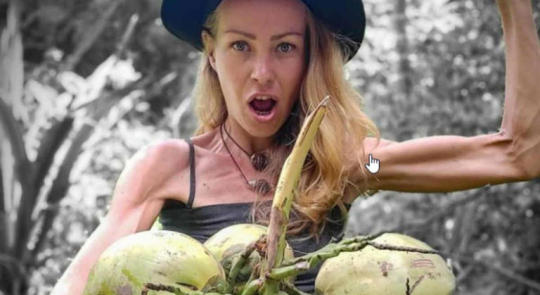
Se alimentaba solamente de frutas, brotes de semillas de girasol y batidos de frutas. Estaba inmersa en una transformación mental, además de física, decía. "Veo cómo mi cuerpo y mi mente se transforman todos los días", reconoció la influencer en su perfil de Instagram. Todo ello mientras describía, con todo lujo de detalles, esa dieta tan sumamente exhaustiva que llevaba a cabo. "Amo mi nuevo yo y nunca voy a volverá los hábitos que solía usar", afirmó

Lejos de que todo quede ahí, a través de su cuenta en Instagram, Zhanna D'Art promovía nada más y nada menos que una vida vegana completamente saludable. Es más, dejaba muy claro que lo que le servía de inspiración para seguir este camino era observar a las personas mayores que aparentaban tener aún más años, y todo por llevar una alimentación, digamos, poco saludable.
No es ningún secreto que las dietas veganas, poco a poco, han ido ganando cada vez más popularidad en todo el planeta. A pesar de todo, hay que tener en cuenta que, en casos tan extremos como este, podemos enfrentarnos a muchos peligros como es, incluso, la muerte. Una triste pérdida, sin lugar a dudas. Descase en paz.

0 notes
Text

Vienna
6K notes
·
View notes
Text
#oeuvre#d'art#la mère#faite#pigments#terres#medium#représentation#de la mère de toutes les mères#arttistist#audran
0 notes
Text

Moses, Joan Gascó, ca. 1500
#art#art history#Joan Gascó#religious art#Christian art#imaginary portrait#Moses#Spanish art#Catalan art#15th century art#tempera on wood#Museu Nacional d'Art de Catalunya
473 notes
·
View notes
Text

#milgram#milgram project#kashiki yuno#yuno kashiki#es milgram#mahiru shiina#shiina mahiru#kazui mukuhara#mukuhara kazui#merci néo mon epoux pour cette œuvre d'art#milgram memes#🦗
518 notes
·
View notes
Text


249 notes
·
View notes
Photo
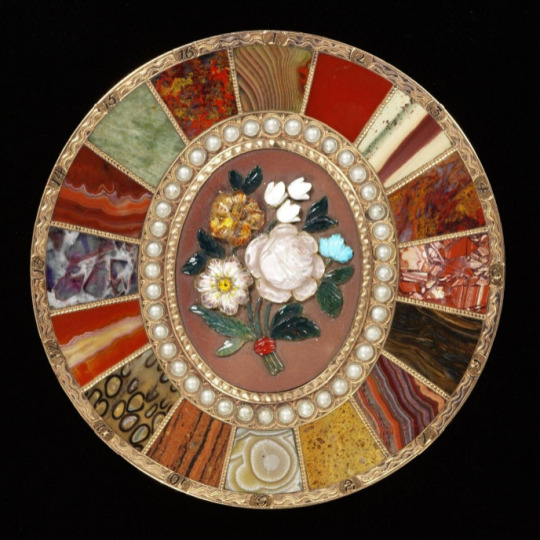

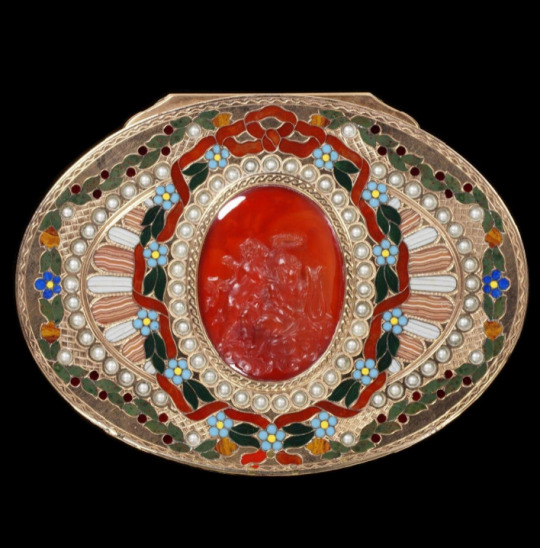

Some beautiful 18th century boxes by Johann Christian Neuber of Dresden
#johann christian neuber#18th century art#18th century#objects#objet d'art#trinkets#neo classical#neo classicism#box#boxes
2K notes
·
View notes
Text

Tàpies. Desde el interior, Curated by Vicent Todolí, Organized by Fundació Antoni Tàpies and Museu Nacional d'Art de Catalunya (MNAC), Fundació Antoni Tàpies, Barcelona, June 23 – November 3, 2013
Catalogue: Tàpies. Des de l'interior 1945-2011, Texts by Pepe Serra, Laurence Rassel, Dawn Ades, and Barry Schwabsky, Published by Fundació Antoni Tàpies, Barcelona / Witte de With Center for Contemporary Art (then Kunstinstituut Melly), Rotterdam, 2013
#art#mixed media#visual writing#photography#exhibition#antoni tàpies#vicent todolí#fundació antoni tàpies#museu nacional d'art de catalunya#2010s
115 notes
·
View notes
Text
HOW DID I NOT KNOW YOU COULD ACTUALLY SEE D'ART NEAR THE END OF PSYCHONAUTS
SO THATS WHY YALL DRAW HIM HANGING OUT IN THE OUT HOUSE ABGJKZHWKW
#My SON what are you doing in THERE#Glad he got a lil Easter egg#Sorry for all the d'art themed posts#I just decided to adopt him is all#*puts him my pocket next to Raz*#Psychonauts#Doodles rants#d'artagnan#D'art
19 notes
·
View notes
Text
Tony Leung visibilmente commosso nel ricevere il Leone d'Oro alla carriera della 80° Mostra Internazionale d'Arte Cinematografica di Venezia
#leone d'oro#tony leung#venezia 80#venice 80#mostra internazionale d'arte cinematografica di venezia
364 notes
·
View notes
Text
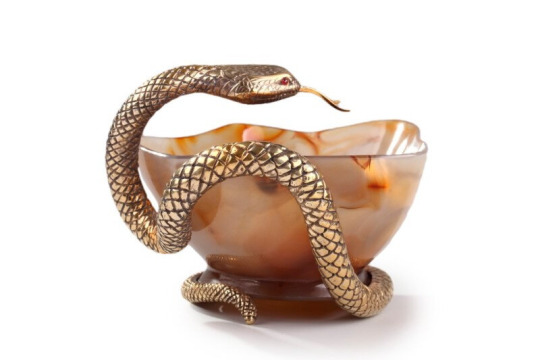

Agate, silver gilt, ruby and diamond bowl, Mellerio dits Meller, 1978.
Courtesy Alain Truong
2K notes
·
View notes
Text
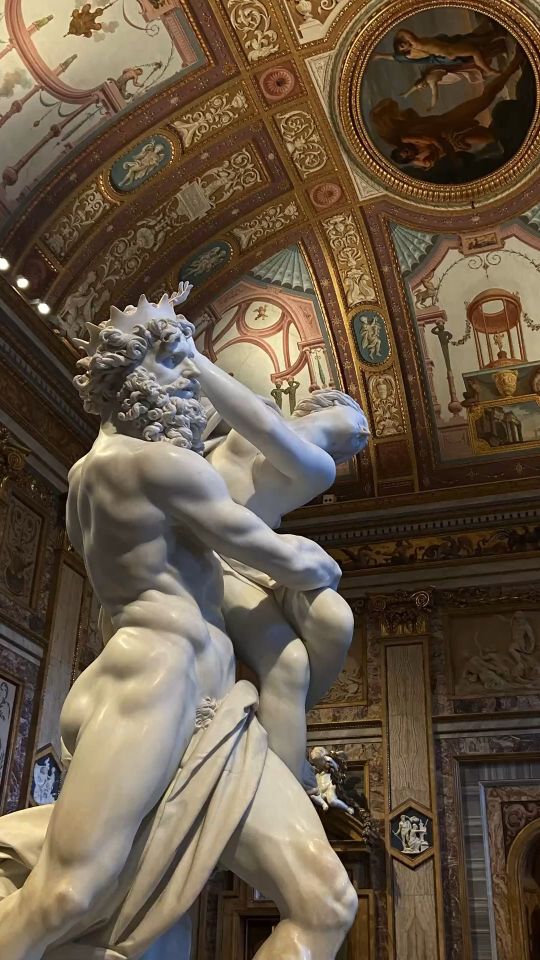

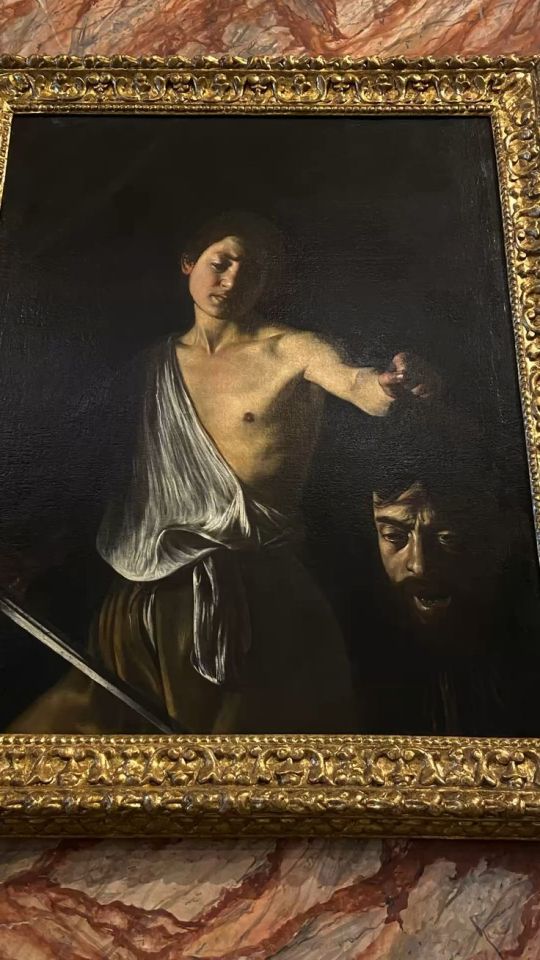

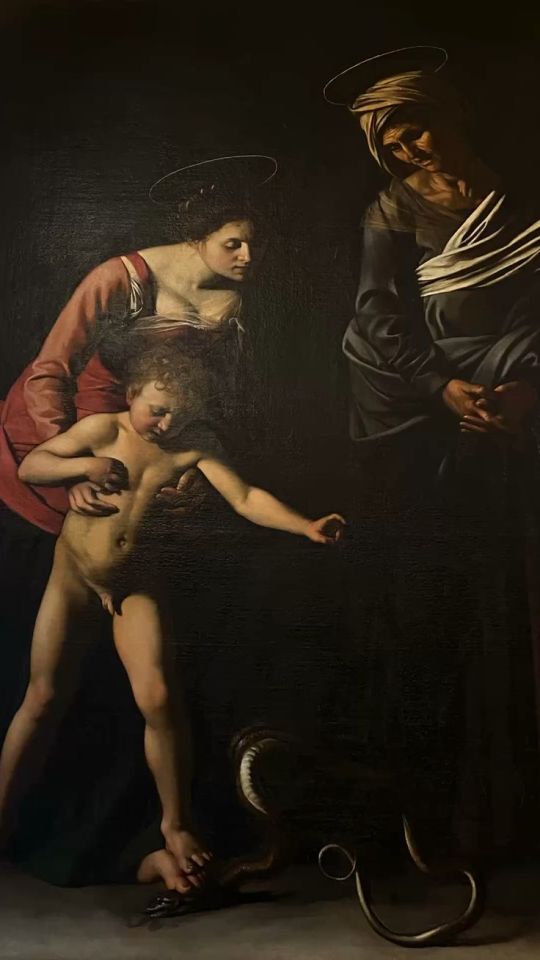
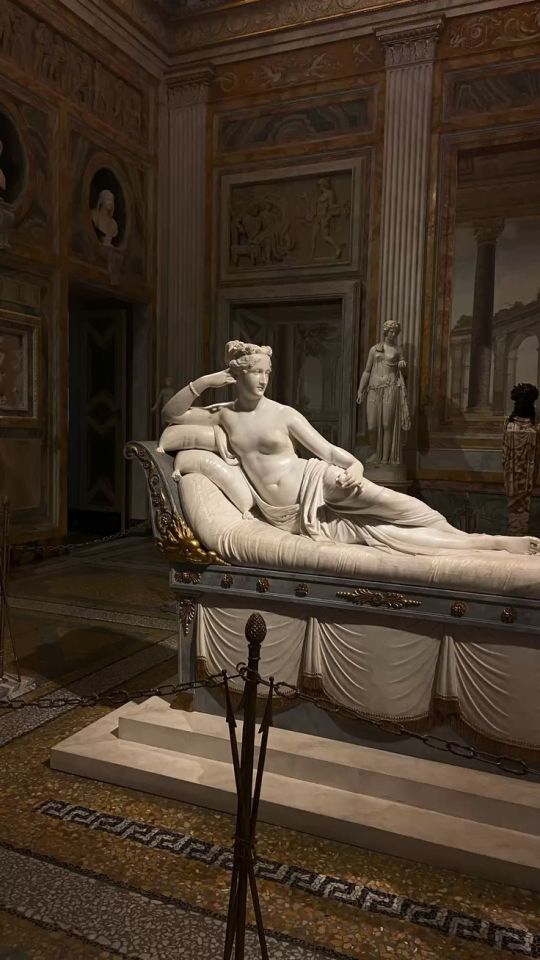
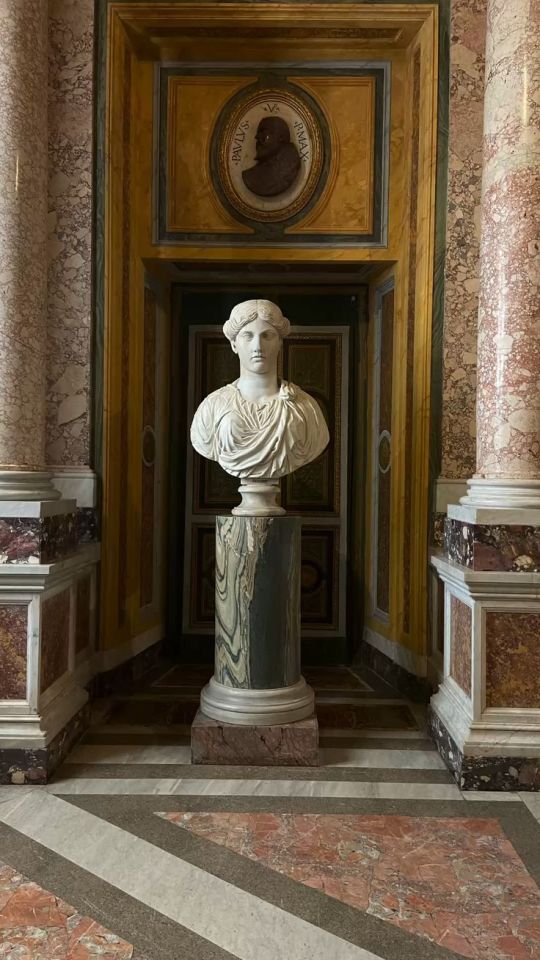

La magnificenza di Galleria Borghese ~ Roma
187 notes
·
View notes